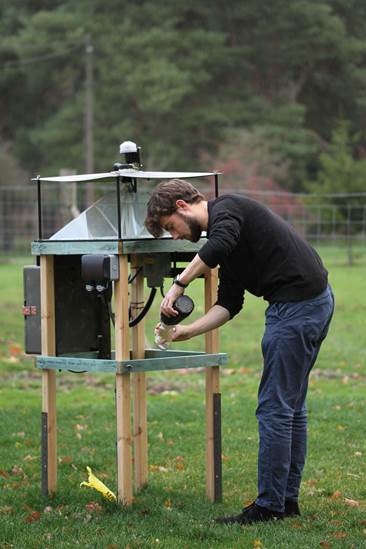Summary
Summary
With the current climatic trend towards higher temperatures and lower summer precipitation, a positive effect on moth numbers had been expected. Whilst climatic variables are driving changes in numbers and species range, they do not explain the decline in both numbers of species and their frequency. Studies have suggested that changes in climate attributed to global warming and anthropogenic factors such as agricultural intensification and habitat fragmentation, may have a significant effect on the status and range of macro-moths (Lepidoptera) in the UK. A number of these moths are known defoliators of UK trees and changes in their abundance and the timing of life cycle events could have a significant effect on the health of our trees. A preliminary investigation was undertaken by Forest Research to explore the relationship between climate and a number of key moth species.
Research Objectives
Moth trap data collected from within the 850 ha ECN site at Alice Holt was examined in 2003 in conjunction with meteorological data for changes in moth abundance, diversity and range. This will clarify how the future health and productivity of trees may be impacted by changes in defoliating species if the current climate trends continue.
Moths have been collected in a standardised light trap on a daily basis at Alice Holt since 1966. This long-term data-set has been analysed alongside the climatic data for the same period.

A sample of 40 key species representing those moths occurring in sufficient numbers which are known to be associated with broadleaved trees were analysed for long-term trends in the abundance, and for individual species, for changes related to variation in climate. Modelling this relationship produced a variable ‘count index’, which was regressed onto each climate variable including a lag of up to three years. Life-event tables were constructed to examine whether relationships between climate, moth numbers and life-events existed. A further sample of 36 moths, primarily associated with herbaceous plants, was compared with the broadleaf associated moth sample to examine whether the trends were specific to the associated broadleaf tree species.
Latest Update
This research has been published in Entomologist's Gazette and a PDF is available for download here.
General Content
References
Burton, J.F. and Sparks, T.H. (2002) Flying earlier in the year: The phenological responses of butterflies and moths to climate change. British Wildlife, June 2002 pp 305-311.
Pollard, E. (1988) Temperature, rainfall and butterfly numbers. J. App. Ecol. 25: pp 819-828.
